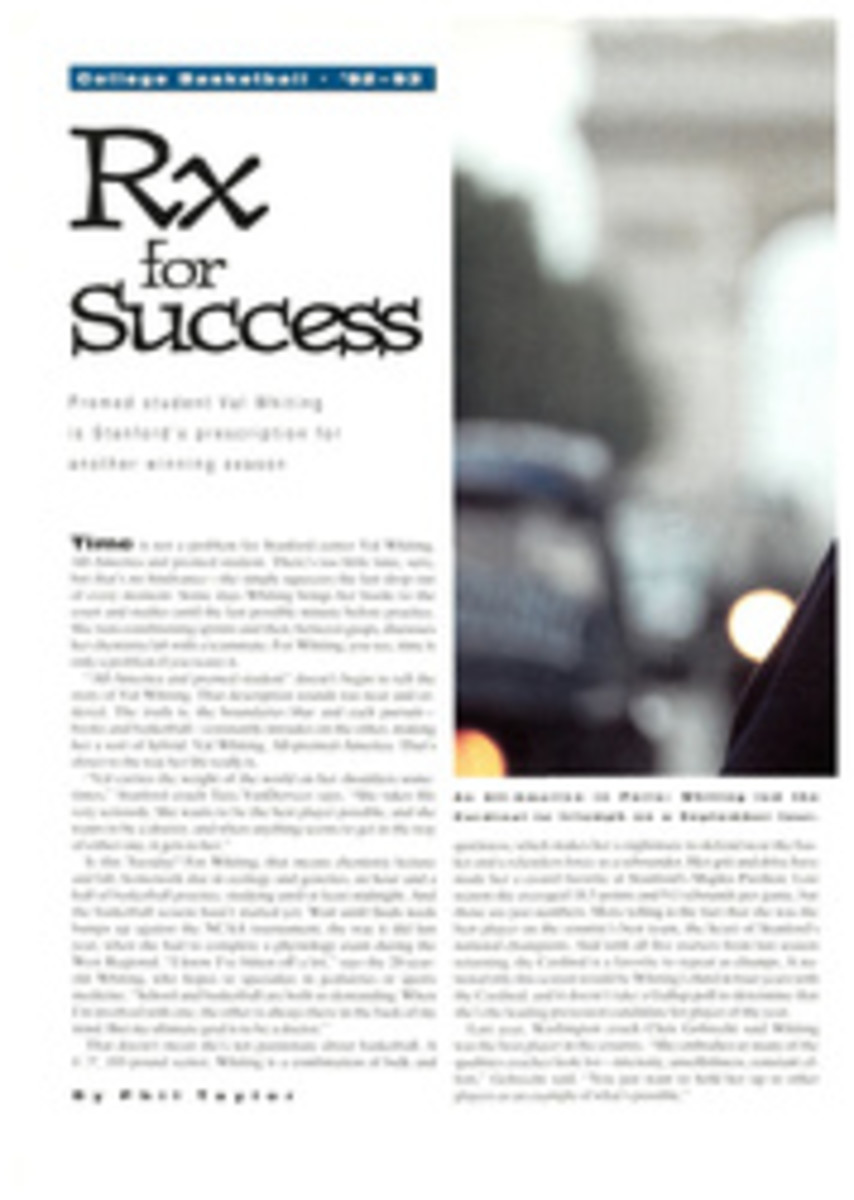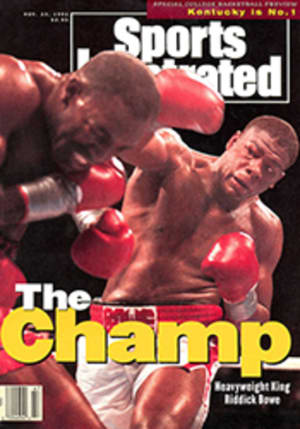
Men of Troy
The cardboard box behind the desk of Troy (Ala.) State coach Don Maestri is overflowing with saucer-sized lapel pins emblazoned with 258—BELIEVE IT! Two hundred and fifty-eight. That is the number of points his Trojans scored in a single game last season against Atlanta's DeVry Institute—obliterating the NCAA mark of 187 they had set just a year earlier against DeVry.
In becoming the first NCAA team to reach 200, much less 250, points in a game, Troy State took 109 three-pointers (breaking the Division II mark of 70, set by the University of Wisconsin-Parkside) and made 51 (the record was 25, set by three different teams, including Troy State). Substitute guard Brian Simpson played only 15 minutes but still got off 26 treys while scoring 37 points. The game featured one made basket every 14 seconds, including 28 dunks. And when the season was over, the 258 points—the scoreboard read 58 points because it only goes up to 199 before turning over—had helped push the Trojans' scoring average to 121.1 points a game, which led all of basketball last season.
"We wanted to put Troy State on the map," says senior forward Terry McCord. "We needed to get notorized."
You mean noticed?
"That too."
Noticed? For heaven's sake, until last season just finding Troy State required a wayward odyssey. The school of about 5,000 students, once a teachers' college, is located in little Troy (pop. 13,051), some 50 miles southeast of Montgomery. Upperclassmen unabashedly greet visitors with signs reading WELCOME TO UCLA- UNKNOWN COLLEGE IN LOWER ALABAMA. Occasionally even locals tire of town attractions such as the National Band Masters Hall of Fame and roam the highways in search of excitement. One recent outing saw assistant basketball coach Jerry Hester bolt for Niceville, Fla., to attend the Annual Mullet Festival.
The irony of sleepy Troy's breeding a style of basketball that looks like it's played on a hot plate isn't lost on Maestri. "Innovators don't follow the norm," he says. "You have to keep an open mind." Which is exactly what Maestri did one evening in early 1989 as he sat watching TV with his assistant, David Felix. Darting across the screen like amphetamine-charged goldfish were Loyola Mary-mount players in their high-octane offense. Rather suddenly, Maestri announced, "We should play like this."
And why not? The Trojans, who had finished the 1987-88 season with a trip to the NCAA Division II Final Four, were going to lose seven of their top eight scorers. Their tallest returnee was barely 6'5". So, over the ensuing six months, Maestri mailed blank VCR tapes to Loyola Mary-mount coach Paul Westhead, and West-head returned a copy of the complete Lion video oeuvre. Soon Maestri had viewed each cassette nearly 10 times and had memorized Westhead's offense.
For the Troy State players, though, the system took some getting used to. The first few games of the 1989-90 season saw the Trojans routinely launching passes high into the bleachers. It wasn't until the next season, when they came back from a 20-point halftime deficit against Southeast Missouri to tie the game seven minutes into the second half, that Maestri's troops became believers. And though they lost that game, the Trojans have gone 44-12 since.
In a nutshell Maestri's strategy is to allow opponents to score—as long as they score quickly. The Trojans will try for steals relentlessly, but if they miss they'll willingly give up the open basket, knowing that eventually their opponents will tire and fall off their game. More than anything, the men of Troy rely on being physically fit to win. Their practices often resemble track meets, with players repeatedly running 50- and 100-yard intervals.
Maestri also keeps his charges nearly guilt-free about their shot selection. "I never get yelled at for shooting too much," says Simpson, "except maybe by players on the other team."
Nor are the Trojans shy about launching from long range. Last season, refs at Troy State games raised their arms more often then New York City traffic cops: The Trojans hoisted an NCAA-record 1,303 three-pointers and made 444.
Critics chastise the Trojans for not playing defense—they surrendered 107.8 points a game last season, the most in Division II—and for running up the score. But Maestri contends that as long as Troy State wins, who cares whether they hold opponents to 40 or 140? And in response to charges about running up lopsided scores, he says, "You don't tell great defensive teams to stop playing defense halfway through the game, do you?"
Since taking over at Troy State in '82, Maestri has been keenly aware that success isn't measured only by wins and losses. He understands the importance of creatively marketing the program. Among his creations are pregame dribbling exhibitions by team members, student shoot-outs from half-court and paper-airplane-flying contests. Attendance has increased by about 1,500 fans a game during Maestri's tenure, despite an occasional ill-fated event like his hamburger-eating relay race. "It was a mess," he says. "We had mayo and pickles all over the gym floor."
In September, school brass repainted that floor, jazzing up the premises in preparation for the Trojans' move to Division I next season. Troy State also has a successful Division II football program, but, says chancellor Jack Hawkins, "Division II just connotes second-class status."
After Troy State announced in June 1990 its decision to leave Division II, the school withdrew from the Gulf South Conference and the basketball team had to cobble together a new schedule of games on short notice. Operating under the beggars-can't-be-choosers rule, the Trojans stuck themselves with a season-opening 14-game, 5,500-mile road trip last year. (They won 11 and went 23-6 overall before losing in the first round of the Division II tournament.)
Troy State has a more conventional schedule this season, which is only one reason that Maestri grows excited when he talks about his prospects for 1992-93. Another: He has eight players back from last year's high-scoring squad. On Dec. 31 the runningest, gunningest team in the land will host Central Methodist, which last season had the fourth-best offense in the NAIA. Says Maestri, "I think we'll need a new scoreboard for that game."
PHOTO
JOHN CHIASSON/GAMMA LIAISON
The Trojans get their game into the fast lane with practices that look like track meets.
PHOTO
TROY STATE UNIVERSITY
Like DeVry, the scoreboard couldn't contain Troy's offense.
Division II
1. Rollins
2. Virginia Union
3. Troy State
4. Kentucky Wesleyan
5. Central Oklahoma
6. North Dakota
7. Grand Canyon
8. South Dakota
9. Wayne State
10. Delta State

